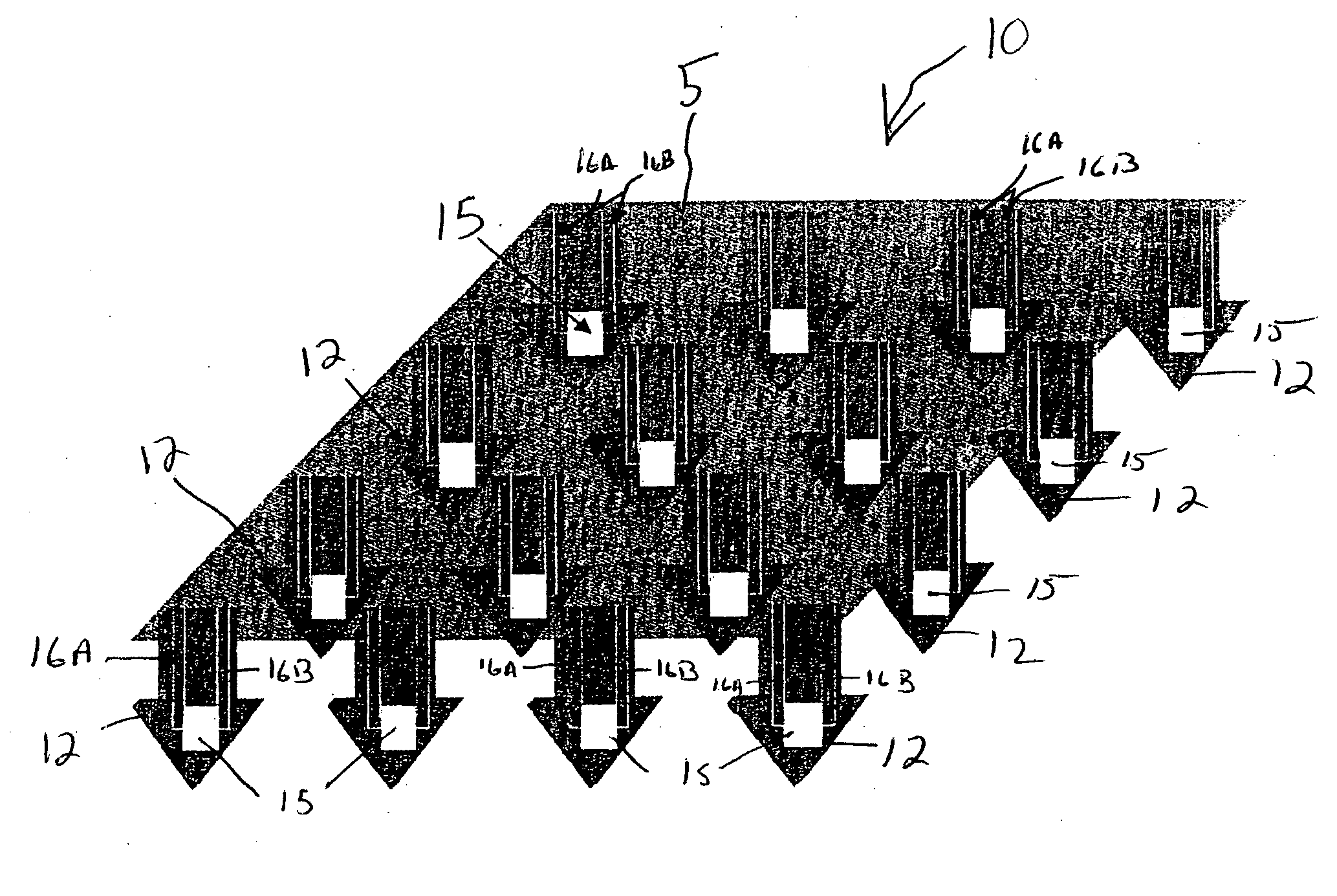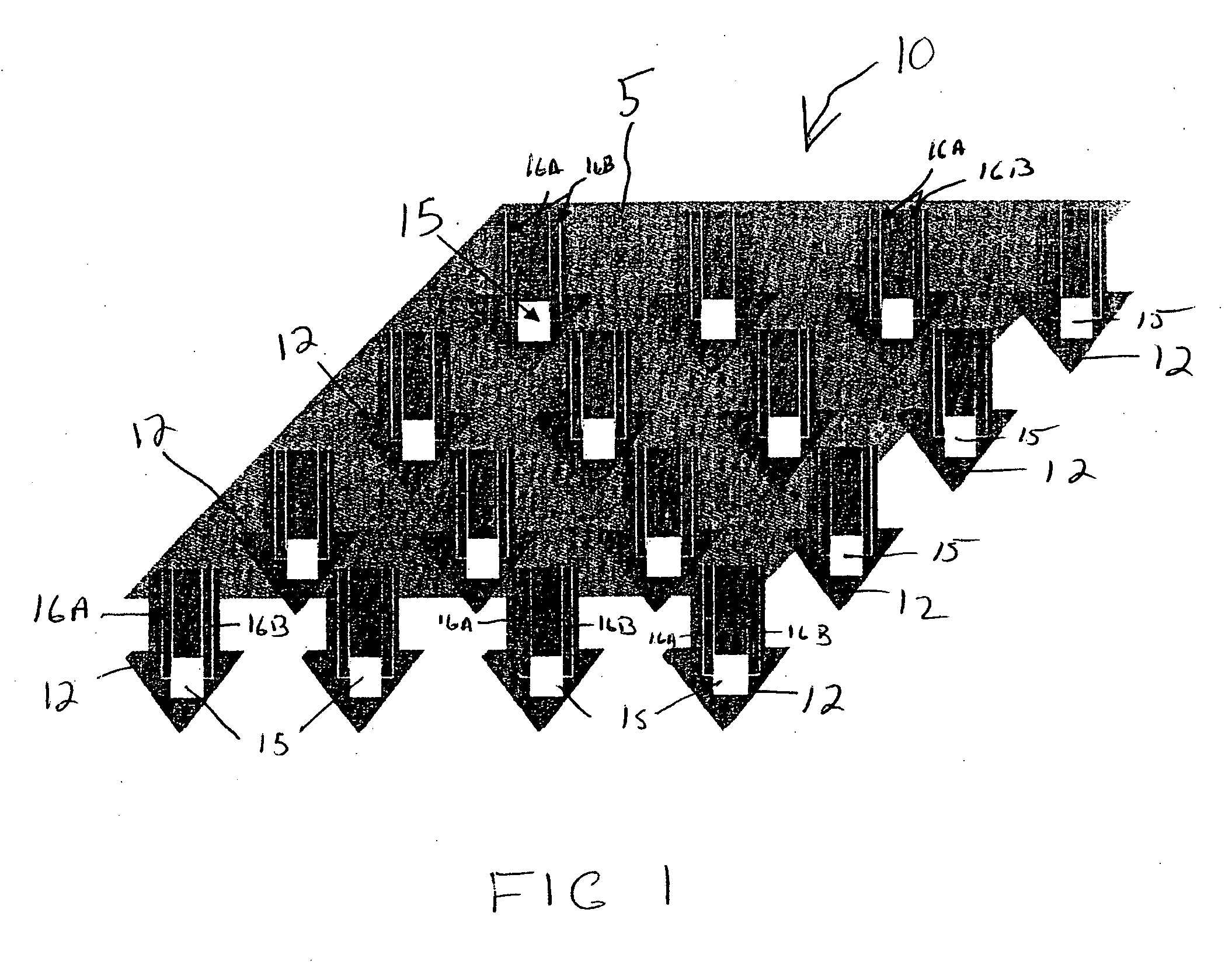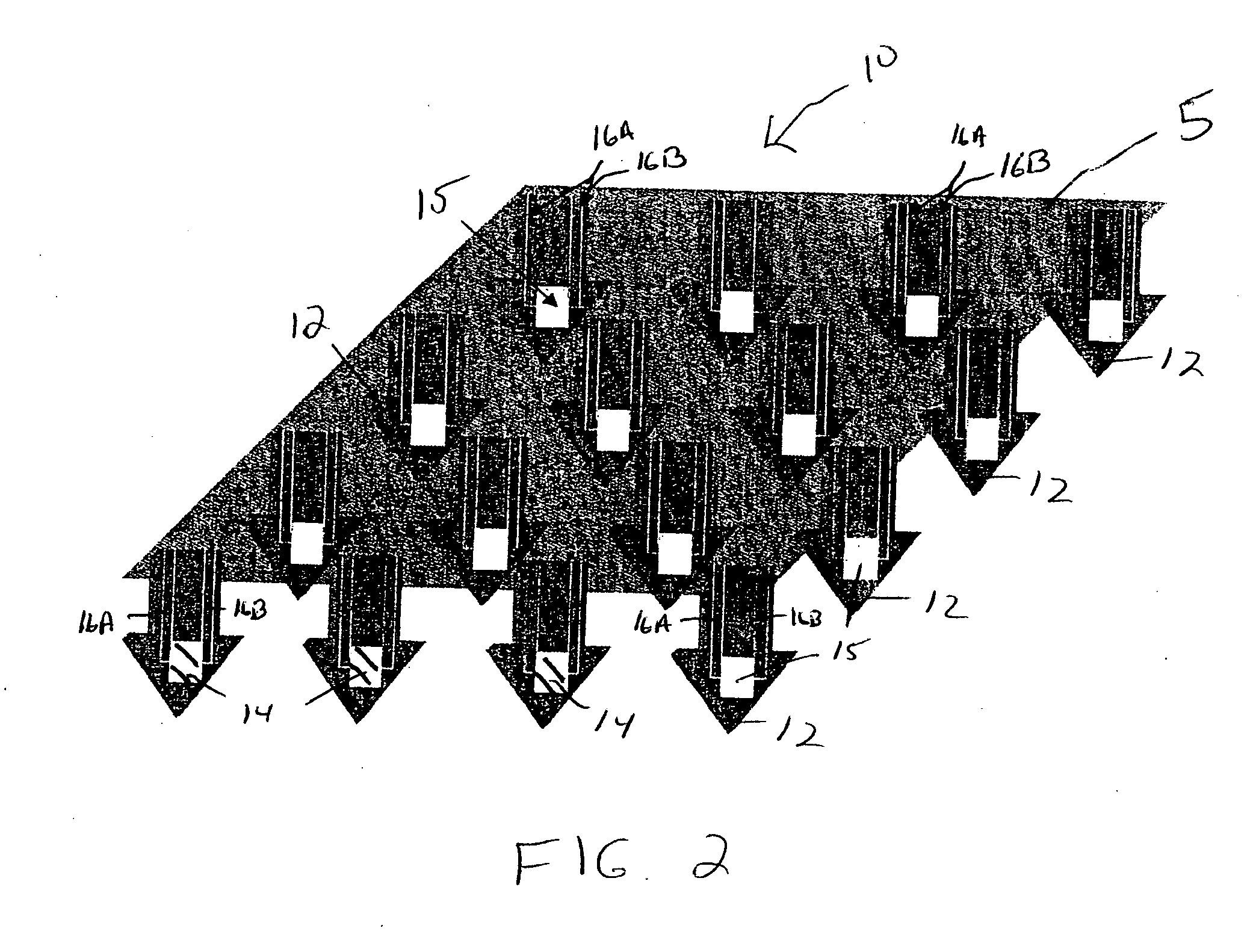Selectively exposable miniature probes with integrated sensor arrays for continuous in vivo diagnostics
a miniature probe and in vivo diagnostic technology, applied in the field of medical devices, can solve the problems of degradation and failure of the sensor, poor accuracy, and elusive vivo biosensors, and achieve the effects of minimizing foreign body responses, minimizing fouling and other interactions, and maximizing accuracy
- Summary
- Abstract
- Description
- Claims
- Application Information
AI Technical Summary
Benefits of technology
Problems solved by technology
Method used
Image
Examples
Embodiment Construction
[0030] The present invention, which provides a medical detecting device containing at least one microprotrusion including a sensor that is protected with a biocompatible protective coating prior to use thereof and a method of detecting an agent using the inventive medical detecting device, will now be described in greater detail by referring to the following discussion and drawings that accompany the present application. It is noted that the drawings of the present application are provided for illustrative purposes and, as such, they are not drawn to scale.
[0031] Before referring to the drawings that accompany the present application, it is noted that the drawings illustrate one embodiment of the present invention in which a plurality of microprotrusions are present and each protrusion contains a sensor that is covered with a biocompatible protective coating prior to using the medical detecting device. Although such a structure is illustrated, the present invention is not limited t...
PUM
 Login to View More
Login to View More Abstract
Description
Claims
Application Information
 Login to View More
Login to View More - R&D
- Intellectual Property
- Life Sciences
- Materials
- Tech Scout
- Unparalleled Data Quality
- Higher Quality Content
- 60% Fewer Hallucinations
Browse by: Latest US Patents, China's latest patents, Technical Efficacy Thesaurus, Application Domain, Technology Topic, Popular Technical Reports.
© 2025 PatSnap. All rights reserved.Legal|Privacy policy|Modern Slavery Act Transparency Statement|Sitemap|About US| Contact US: help@patsnap.com



